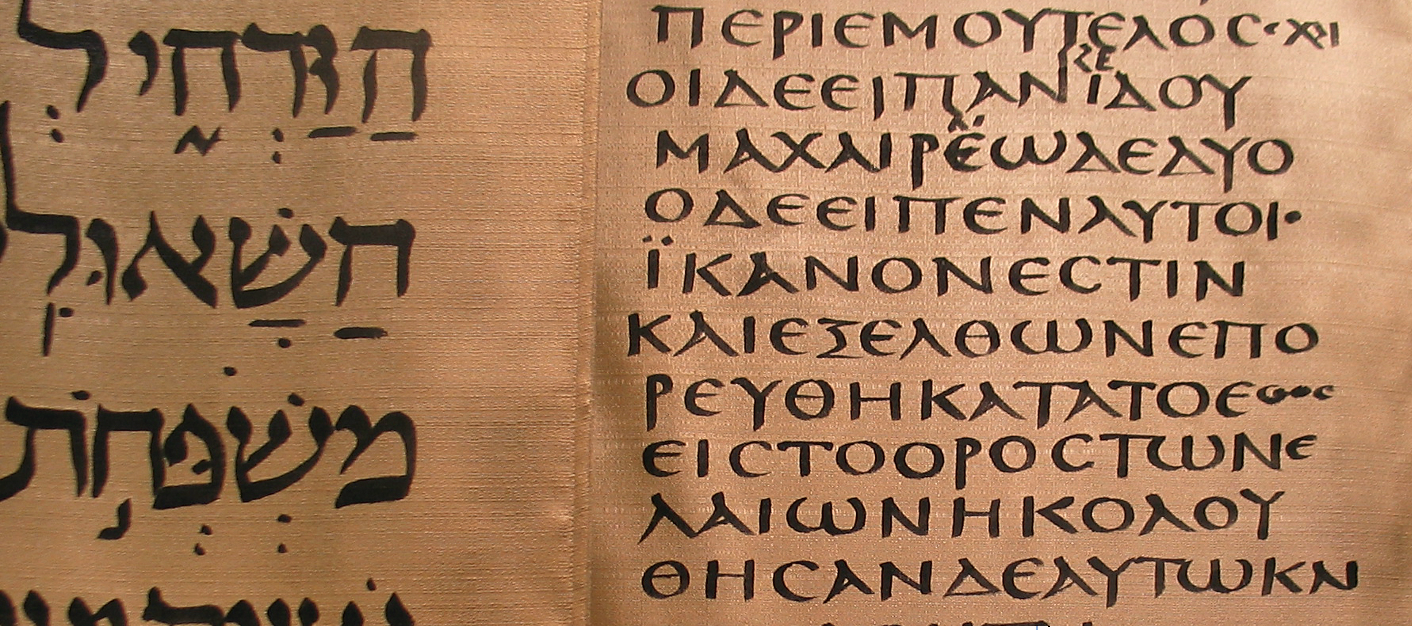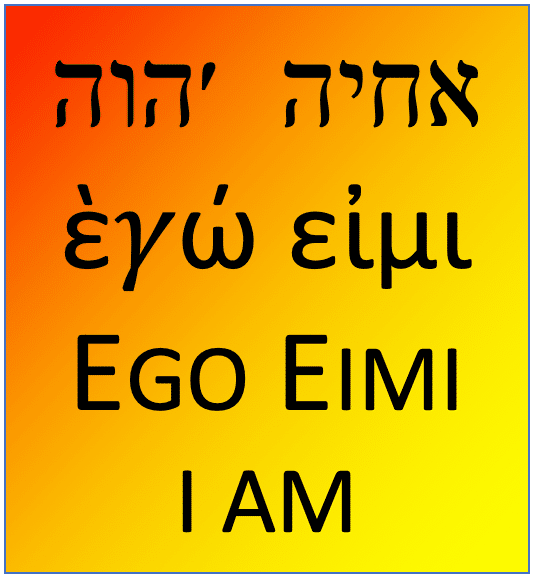Rev. Len Abrams Christ Church South Nutfield 10am – 7 June 2020
Jesus – the pre-existing Word
Introduction 
The Trinity. One of the central doctrines of the Christian faith is that God is a triune reality. God is 3 in one, God the father, God the son and God the Holy Spirit. One God in three persons.
One of my lecturers at theological college remarked that no one had ever preached on the Trinity without committing some heresy in the first 5 minutes. It is the problem of the finite trying to grasp the infinite; it is a problem of perspective. It is the problem of the Word becoming flesh. The creator of the universe (which is 13.8 billion years old and 93 billion light years across) is born as a human child in a stable! It is like us as an Ant trying to understand what an elephant is whilst we are crawling on its big toe. This is reflected in today’s reading from Isaiah chapter 40 – God holding all the world’s oceans in the palm of God’s hand. We don’t have to understand it all – we cannot! We are called to trust.
Over the coming month we are going to be looking at who Jesus said he is. This will be done through the lens of Johns gospel, through a series of sermons over the next few weeks during which Jonathan, David and myself will unpack the “I am” sayings of Jesus in John’s gospel. Now you may be very familiar with these or you may be looking at them for the first time. In my experience, if we are open to God, there is always something new to learn. It is like an onion – there is always another layer to discover. “Deeper in and higher up”.
Introduction to John 8: 48-59
John’s Gospel is focused on the identity of Christ as the primary theme with secondary themes of eschatology and salvation.
56 Your father Abraham rejoiced at the thought of seeing my day; he saw it and was glad.”
57 “You are not yet fifty years old,” they said to him, “and you have seen Abraham!”
58 “Very truly I tell you,” Jesus answered, “before Abraham was born, I AM!” 59 At this, they picked up stones to stone him, but Jesus hid himself, slipping away from the temple grounds.
The passage brings to a focal point the identity of Jesus and the saving work of God in human history, especially in the climax in verse 58. ‘The Jews’ misunderstand Jesus’ statement as relating to mortal lifespan and ridicule the notion, but Jesus’ meaning is that he does not occupy a temporal time frame, implying his pre-existence outside time. This is resoundingly driven home by his statement in verse 58.
Jesus said to them, ‘Very truly, I tell you, before Abraham was, I AM.’ (NRSV)
The ‘I AM’ phrase in verse 58 is έγώ είμι in Greek – ego eimi – it is without a predicate nomative and is thus not a normal Greek form; this requires explanation.

The format is a recurrent formula in the gospel which is key to the development of Johannine Christology. The phrase is used in the Septuagint LXX – the Greek translation of the Hebrew scriptures dating from the middle of the third century B.C.– to denote the name of God. It is first used in Exodus 3:14 and then elsewhere in the Old Testament; a prime example is Isaiah 43:10.
a) Exodus 3:14
13But Moses said to God, ‘If I come to the Israelites and say to them, “The God of your ancestors has sent me to you”, and they ask me, “What is his name?” what shall I say to them?’ 14God said to Moses, ‘I AM who I AM.’ He said further, ‘Thus you shall say to the Israelites, “I AM has sent me to you.”’ (NRSV)

In the traditions of the ancient near east, the name of a god was important and incorporated its location, attributes and the extent of its power – it denoted the identity of the god. Speaking the name was an act of invocation. The real name of the god was often a secret, the knowledge of which enabled invocation (Stalker, 1963). The Hebrew is אחיה ׳הוה (HWHY, reading right-to-left), the  meaning of which has been the topic of wide debate. It has been translated ‘The one who causes to be’ and ‘the one who is’. The name denotes absolute being as it is in the continuing tense implying neither beginning nor end. The Hebrew form of the phrase – YHWH – became the unsayable divine name. The name denotes an active God involved in the world as the ultimate CAUSE, who is particularly active in the salvation history of the Israelites and all humanity, as is illustrated in the reason for his revelation and commission to Moses in this passage.
meaning of which has been the topic of wide debate. It has been translated ‘The one who causes to be’ and ‘the one who is’. The name denotes absolute being as it is in the continuing tense implying neither beginning nor end. The Hebrew form of the phrase – YHWH – became the unsayable divine name. The name denotes an active God involved in the world as the ultimate CAUSE, who is particularly active in the salvation history of the Israelites and all humanity, as is illustrated in the reason for his revelation and commission to Moses in this passage.
b) Isaiah 43:10
You are my witnesses, says the Lord,
and my servant whom I have chosen,
so that you may know and believe me
and understand that [I AM].
Before me no god was formed,
nor shall there be any after me. (NRSV)
This is one of a number of occurrences of the I AM formula in Isaiah.
Johannine intentions of John 8:58
The I AM formula is used extensively in John’s Gospel both with and without a predicate nomative. In verse 58 it is used in the absolute sense to indicate that Jesus always existed before Abraham and will continue to exist after him. Stoning was the prescribed penalty for blasphemy, indicating that they had heard plainly what he had said in making himself equal to God.
The use of the ‘I AM’ formula in John’s Gospel
The two forms of ‘I AM’ phrases in John’s gospel – those with and without a predicate nomative are distinctive. (A ‘predicate nomative’ is a clause that describes the subject – it is also known as a ‘subject complement’ and follows a linking noun.) In both forms έγώ είμι (ego eimi) is used which would have a specific and provocative meaning for the Jewish hearers at the time of Jesus who were familiar with the Greek Old Testament as discussed above. However the use of the formula without a predicate nomative is not meaningful itself in Greek usage and is directly associated with the Jewish holy name of God donating the absolute pre-existent being.
a) The ‘ego eimi’ – I AM – sayings with a predicate nomative:
The use of the έγώ είμι formula throughout the gospel with a predicate nomative highlights a number of characteristics of Jesus and forms a series of self-revelatory episodes, usually associated with particular events or miracles. “The combination of έγώ είμι with various symbols may be said to summarise [Jesus’] role in revelation and salvation”. The sayings are summarised as follows:-
6:35 “I AM the bread of life.”
6:51 “I AM the living bread.”
8:12 “I AM the light of the world.”
9:5 “I AM the light of the world”
10:7, 9 “I AM the gate for the sheep.”
10:11, 14 “I AM the good Shepherd.”
11:25–6 “I AM the resurrection and the life.”
14:6 “I AM the way, and the truth, and the life.”
15:1, 5 “I AM the true vine, and my father is the vine grower.”
b) Absolute ‘ego eimi’ – I AM – sayings without a predicate nomative
These occurrences of έγώ είμι are generally less well known than the “‘I am’ sayings of Jesus” above but in many ways are more striking and direct and leave us in no doubt about who Jesus was saying he was. They are each used by Jesus when addressing a specific person or group to expressly identify himself.
4:26 Jesus said to her, “I AM, the one who is speaking to you.” (Woman at the well)
6:20 But he said to them, “I AM; do not be afraid.” (Jesus walking on the water)
8:24 “I told you that you would die in your sins, for you will die in your sins unless you believe that I AM.”
8:28 “When you have lifted up the son of man, then you will realise that I AM, and I do nothing on my own, but I speak these things as the Father instructed me.”
8:58 “Very truly, I tell you, before Abraham was, I AM.” (Discussion with Jewish scholars)
13:19 “I tell you this now before it occurs, so that when it does occur, you may believe that I AM.” (Last supper)
18:5, 7 Jesus replied, “I AM”. When he said to them, ‘I AM’, they stepped back and fell to the ground. (Garden of Gethsemane at the betrayal)
Most of these are “lost in translation” in our modern translations so it is little wonder that we have not known this about what Jesus was saying about his own identity. Spend some time to reflect on these passages.
Message today
In some quarters in recent decades Jesus has been reduced to the ‘personal friend’ of the ‘saved’ individual (which is true, in part), whilst in other quarters he is regarded as the remote Christ figure, sublime and intangible (which, in terms of being surrounded in mystery, is also true in part). However, John’s portrayal of Jesus as both the pre-eminent, pre-existing Cause of all, and the God who is directly engaged in the salvation of human history, provides an infinitely more nuanced and holistic presentation of Jesus of Nazareth. Jesus, through the incarnation, brought the unsayable ‘I AM’ into the lives of ordinary people.
Parker Palmer explores the identity of the individual in the context of faith and community. It is only within the freedom of being transformed by grace into the image of the ‘I AM’ that we can become who we were created to be and truly be the ‘I am who I am’ within our own lives, healed and redeemed. “One crosses God by trying to be something one is not” (Palmer, 2000: p. 51).
–oo0oo–
